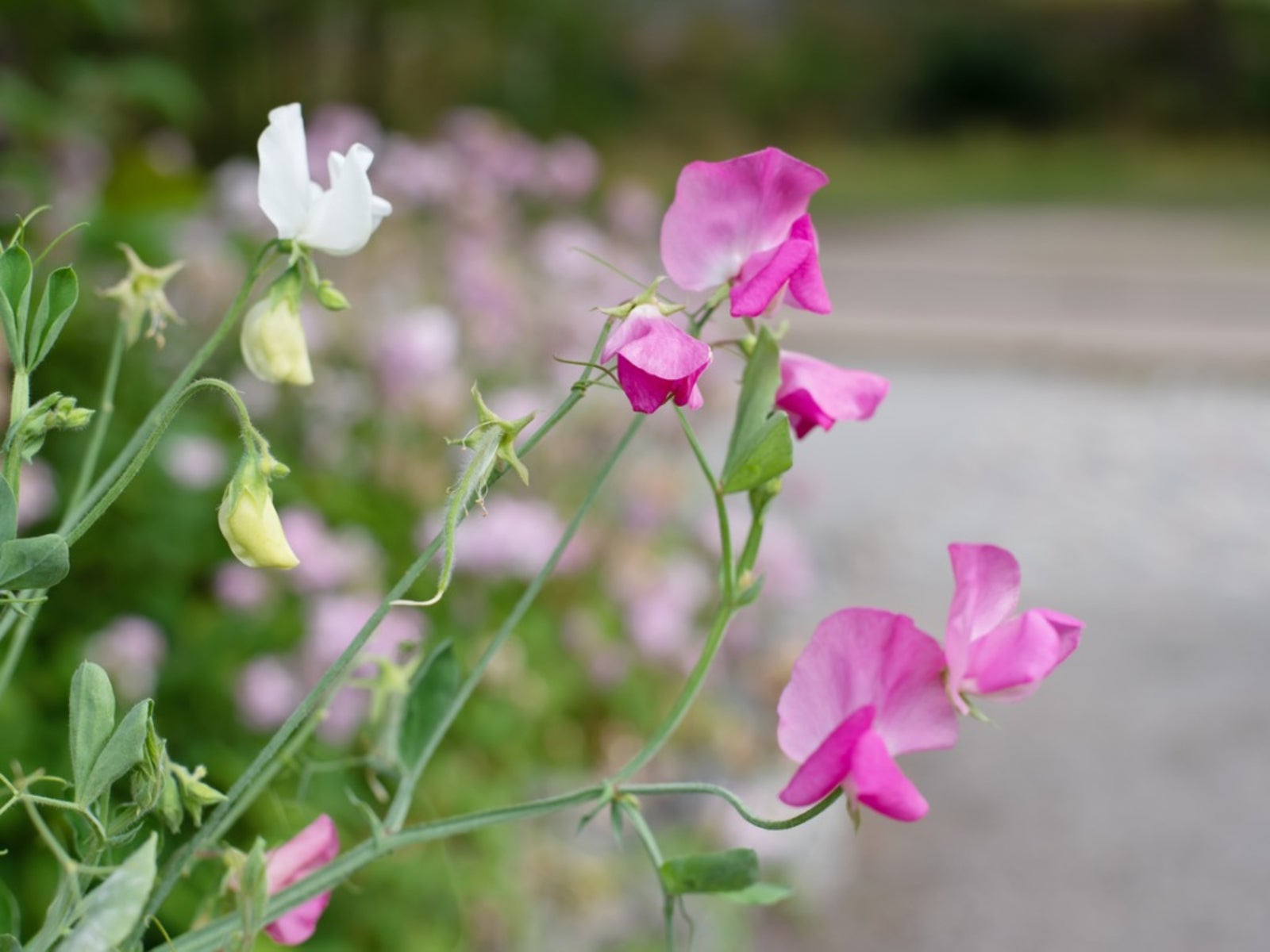Care Of Sweet Peas - How To Grow Sweet Peas


The sweet peas (Lathyrus odoratus) your grandmother grew truly deserved the name “sweet” because of their delightful fragrance. In recent years, breeders have put fragrance on the back burner, selectively breeding plants with outstanding flowers and a wide range of colors at the expense of fragrance. You can still find fragrant varieties, often labeled as “old fashioned” or “heirloom,” but modern varieties also have their charm. Taking care of sweet peas is easy. They prefer long, cool summers and don't last past spring in areas where summers are hot. Where winters are mild, try growing sweet peas over fall and winter.
How to Grow Sweet Peas
Sweet pea flowers come in both bush and climbing types. Both types are vines, but the bush types don't grow as tall and can support themselves without the aid of a trellis. If you are growing climbing sweet peas, have your trellis in place before planting the sweet pea seeds so that you don't damage the roots by trying to install it later. Avoid planting them near a wall where air can't circulate freely. Plant sweet pea seeds in spring while there is still a chance of light frost or in late fall. The seeds have a tough coat that makes it difficult for them to germinate without a little help. You can soak the seeds in warm water for 24 hours to soften the seed coat, or nick the seeds with a file or sharp knife to make it easier for water to penetrate the seed. Choose a sunny or lightly shaded site and prepare the soil by working in a 2 inch (5 cm.) layer of compost to improve soil fertility and drainage. Sow the seeds an inch (2.5 cm.) deep, spacing climbing types 6 inches (15 cm.) apart and bush types 1 foot (31 cm.) apart. The sweet pea seeds usually emerge in about 10 days, but it can take two weeks or more.
Care of Sweet Peas
Pinch out the growing tips of the plants when they are about 6 inches (15 cm.) tall to stimulate lateral growth and bushiness. This is a good time to mulch the plants as well. Water the soil around the plants often enough to keep it moist, applying the water slowly and deeply. Fertilize with half-strength liquid fertilizer twice during the growing season. Too much fertilizer encourages an abundance of foliage at the expense of sweet pea flowers. Pick off spent flowers to encourage new blossoms. Caution: Sweet pea seeds resemble edible sweet peas, but they are toxic if eaten. If children are helping in the garden, make sure they don't put them in their mouths.
Sign up for the Gardening Know How newsletter today and receive a free copy of our e-book "How to Grow Delicious Tomatoes".

Jackie Carroll has written over 500 articles for Gardening Know How on a wide range of topics.